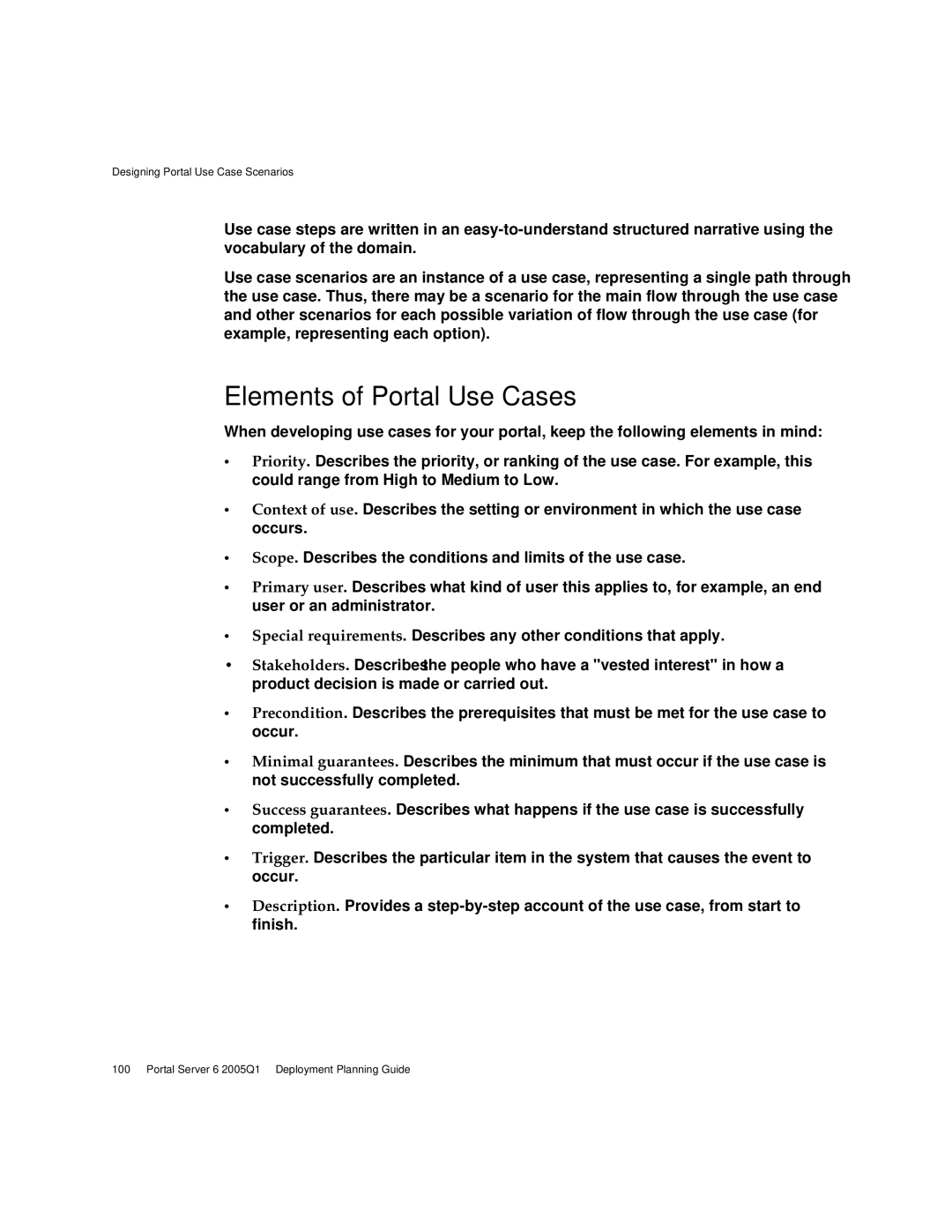Designing Portal Use Case Scenarios
Use case steps are written in an
Use case scenarios are an instance of a use case, representing a single path through the use case. Thus, there may be a scenario for the main flow through the use case and other scenarios for each possible variation of flow through the use case (for example, representing each option).
Elements of Portal Use Cases
When developing use cases for your portal, keep the following elements in mind:
•Priority. Describes the priority, or ranking of the use case. For example, this could range from High to Medium to Low.
•Context of use. Describes the setting or environment in which the use case occurs.
•Scope. Describes the conditions and limits of the use case.
•Primary user. Describes what kind of user this applies to, for example, an end user or an administrator.
•Special requirements. Describes any other conditions that apply.
•Stakeholders. Describes the people who have a "vested interest" in how a product decision is made or carried out.
•Precondition. Describes the prerequisites that must be met for the use case to occur.
•Minimal guarantees. Describes the minimum that must occur if the use case is not successfully completed.
•Success guarantees. Describes what happens if the use case is successfully completed.
•Trigger. Describes the particular item in the system that causes the event to occur.
•Description. Provides a
